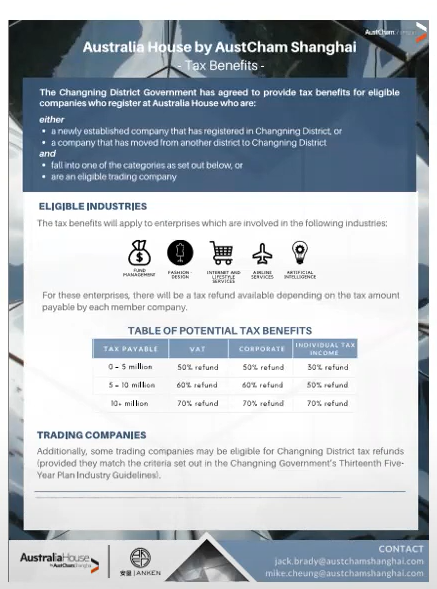The Benefits of Cluster Manufacturing – China’s Advantage
The Benefits of Cluster Manufacturing – China’s Advantage
November 10, 2016
As wages keep on rising in a progressively service oriented economy, China expects manufacturing sector to strengthen the country’s labor-intensive industries. Offering clear lines of correspondence and lower transportation costs, cluster manufacturing gives economic stability by uniting a variety of organizations from across the supply chain.
While China hopes to move to a more consumer-based society, its manufacturing base encounters increasing pressure from economical ASEAN individuals like Vietnam and Indonesia. However, in China’s coastal provinces, investors will discover entrenched infrastructure that much of ASEAN lacks. The Middle Kingdom’s capacity to give the assets for dependable manufacturing in close proximity to like-minded organizations and foundations are fundamental arguments to China’s continued manufacturing competitiveness.
Characterizing a Cluster
An manufacturing cluster is a unified system of like-minded organizations in a geographically concentrated area. They share industry qualities and advantage from aggregate development. Clusters hope to make a situation with clear correspondence that permits them to bridge gaps and make a more effective ecosystem for outline, creation, and supply.
An effective manufacturing cluster does not start with item improvement, but rather purchase local resources, educational institutions and complimentary administrations. An entrenched group offers a business system that is an effortlessly controllable framework for providers, purchasers, and R&D offices. Like Shenzhen’s one stop shop for gadgets generation, groups ought to keep on attracting comparable organizations with an end goal to make a feasible framework for continued development.
Shenzhen
Despite the fact that cluster manufacturing is mainly situated in the progressive manufacturing areas of industrialized nations, India and China have identified its significance and acted accordingly. No place in China are the advantages of cluster manufacturing more evident than the city of Shenzhen.
Known as China’s Silicon Valley, Shenzhen brags more than 4,700 national-level innovative enterprises in the midst of 30,000 science and innovation organizations. With the biggest export oriented manufacturing base in China and R&D speculation of 4.02% of the city’s GDP (generally break even with in percentage to that of South Korea, the second highest ranking in the world) Shenzhen has turned into a one-stop-shop for technological outline, creation, and supply.
The growth of ASEAN manufacturing
Rising labor costs in China, and in addition appealing manufacturing options in ASEAN, have reared vulnerability over China’s continued supremacy in the manufacturing industries. China’s fast advancement has enlarged manufacture costs, and has consequently reduced profitability for foreign organizations working inside the country. China’s ASEAN neighbors keep on developing at a consistent pace, offering outside foreign investor’s tax incentives and low creation and gathering costs.
However, ASEAN’s manufacturing divisions still faces critical obstacles with respect to the ease of leading foreign direct investment and the improvement of local framework. Despite the fact that the capitals and major port cities of numerous ASEAN member states have competent framework and a gifted workforce, these pleasantries quickly fall apart in districts expelled from the urban centers.
Indonesian President Joko Widodo has applied tax incentives for organizations willing to put resources into one of Indonesia’s nine Special Economic Zones (SEZs).
In any case, despite the fact that these zones offer preferential policies, Indonesian SEZs are generally made to goad improvement in rural or underdeveloped territories. In that capacity, potential investors into the developing markets of Asia should to precisely consider the greater part of the components of a potential investment opportunity.
With both new foreign direct investment and production lines customarily situated in China moving towards ASEAN, China needs to cautiously consider the fate of its manufacturing industry.
Accomplishing economic stability
Today, cluster manufacturing is still a viable technique for economic change. The Science Publishing Group offers a report from the International Journal of Business and Economics Research on the advantages of cluster manufacturing for Chinese communities whose commerce depends vigorously on natural resources. So, the journal finds that deliberately executed manufacturing clusters can aid resource communities adopt a proactive strategy to an overwhelming dependence on an unsustainable industry. Uniting similarly invested organizations that span the length of the supply chain work to make a healthy and sustainable local economy.
As of late, China’s State Administration of Taxation (SAT) has started proclaiming resource tax reforms with an end goal to ration the country’s characteristic assets. While these directions will without a doubt have some impact, various urban areas economically reliant on to natural resources have as of now observed their provisions depleted as the country attempts to take care of domestic demand.
Such cases have conveyed the advantages of cluster manufacturing to aid for nearby government authorities. In Fuxin, a solid agate handicraft and manufacturing cluster turned into a key stabilizer to the weakening of mining and the Fuxin Mining Group’s expulsion of an important portion of its workforce. Inhabiting 50 percent of the market share and in addition giving 30,000 employments, the manufacturing cluster is currently the driving power of the city’s economy. Stories like that of Fuxin can be found in Liaoyuan’s sock manufacturing sector, Benxi’s customary Chinese pharmaceutical cluster, and Baotou’s lanthanum cluster. As these communities depleted their resources of iron and coal, cluster manufacturing turned out to be a successful solution for their weak economies.
As China remains to mine its normal resources at a disturbing rate, the country has started to search out natural resources lying past its fringes. A report issued by Ernst and Young put China at the top of list of mining and metal procurement in 2014. China’s acquisitions abroad should be a flag to important residential economies that its time has come to begin considering elective economic solutions. In such cases, cluster manufacturing, particularly in the low-cost districts of the inside, has as of now rose as an appropriate substitution.
For more information regarding as regards with “The Benefits of Cluster Manufacturing – China’s Advantage”, please feel free to contact our China team at + 86 187 177 31958 or email us at info@opkofinance.com








